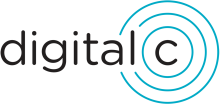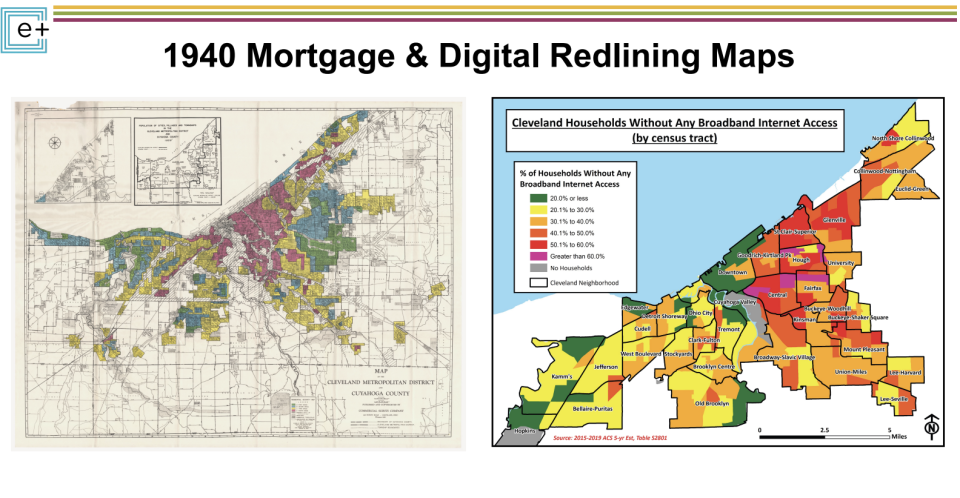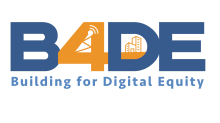
While Cleveland was ranked one of worst-connected cities in America in 2019 by the National Digital Inclusion Alliance (NDIA), nonprofit, DigitalC is chipping away at this reputation with a fast-tracked initiative aimed at bringing affordable broadband to the people that need it. The nonprofit’s Wireless Internet Service Provider, EmpowerCLE+ launched in 2018 and quickly accelerated in 2020 in response to the pandemic. EmpowerCLE+ provides “fast, reliable Internet speeds for $18/month, and is hoping to double its capacity to 6,000 households in the coming year.
Currently, households are receiving service via a fiber-fed mesh millimeter wave network. The expansion will include additional fiber for Multi-Dwelling Units (MDUs) as well as new wireless deployments, including Citizens Broadband Radio Service (CBRS) network. The new CBRS expansion will help the network overcome geographical obstacles and bring additional service to homes it was not able to reach before with just millimeter wave technology.
Connecting the Unconnected
According to DigitalC's website, the nonprofit came from OneCommunity, formerly known as OneCleveland and founded in 2003 to build a backbone fiber network connecting hospitals and other nonprofits throughout the metropolitan area. In 2014, OneCommunity sold its fiber assets to Everstream, a Cleveland-based ISP serving communities throughout the midwest and parts of the east coast with fast, reliable Internet through fiber.
In 2015, DigitalC was established to “make Greater Cleveland's digital future more equitable.” The nonprofit spent the last six years focused on connecting communities of color and immigrant communities that have experienced redlining in the city.
The impact of redlining can be seen not only in the lack of investment and homeownership in the area, but also the lack of reliable, affordable Internet options in the area. When DigitalC was identifying which neighborhoods to focus on connecting first, they looked at the least connected communities, that overlapped with the parts of the city that experienced redlining.

“We embarked upon expanding the scale and creating a business model that first and foremost [provided] a service that was reliable, and had the highest speed but was also affordable to the families,”Angela Bennett, DigitalC’s Administrative Director, told ILSR in an interview. “It’s not access if you can’t afford it.”
DigitalC completed its first pilot project, Connect the Unconnected, in 2018 when it connected 550 households in three different Cuyahoga Metropolitan Housing Authority buildings and provided free Internet to residents.
“Sometimes, $10/month, if you’re unemployed if you just lost your job [is too much], and we have families who need access to the Internet so they can apply for unemployment benefits and apply for jobs,” Bennett said. “And so our philosophy is that we will never disconnect anyone because of an inability to pay.”
The nonprofit has been partnering with other organizations ever since to come up with solutions to bridge the digital divide and try to educate state lawmakers on how broadband is a necessity in ensuring positive education, economic and health outcomes for neighborhoods throughout Cleveland.
“But when the pandemic hit, [the need for connectivity became clear], and it really became, how fast can we get our infrastructure built out so that we can connect as many households as possible?” Bennet said. “We had a greater demand for our services than our capacity.”
Ramping Up Capacity
Over the course of the pandemic, DigitalC has increased the households it serves to nearly 1,000.
The city has a lot of ground to cover however, to make up for being one of the worst-connected cities in the country according to a list sorted by NDIA using American Census Survey data. Cleveland is ranked seventh overall, and first among cities with populations over 100,000.
“We need a plan for the city and the county areas that are underserved and it’s going to take everybody working together,” DigitalC CEO Dorothy Baunach told Cleveland.com. “And we’re all about that.”
In March 2021, DigitalC expanded its service to 277 homes in the Lexington Village development in the Hough neighborhood. The expansion, part of the nearly 1,000 total households connected today, was made possible through a $450,000 grant from Project OVERCOME, an effort by nonprofit US Ignite to narrow the digital divide across the country.
Over the last year they’ve connected households throughout the Fairfax, Hough, Central, Clark-Fulton, Glenville and Buckeye-Woodhill neighborhoods and want to continue building connecting households through their 3,000-home capacity while increasing capacity to 6,000 households this year.
“Things will not go back to how they were pre pandemic,” Bennett said. “Families will still need access. … How do we prepare our families so that we are never, ever, ever in that same crisis mode again.”
Bennett said that connecting these neighborhoods wouldn’t be possible without the partnerships they’ve formed. Both nonprofits and private companies including Cleveland Clinic, Cleveland Metropolitan School District, Metro Health and more have donated their rooftops to install antennas for line-of-sight connections to homes.
Image of 1940 Mortgage Redlining Map and 2021 Digital Redlining Map courtesy of Digital C.






